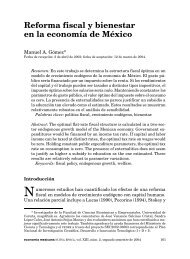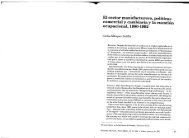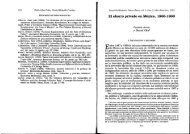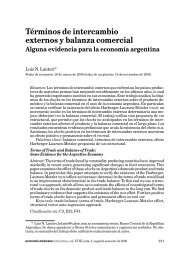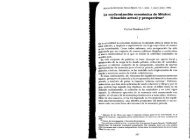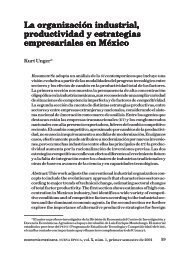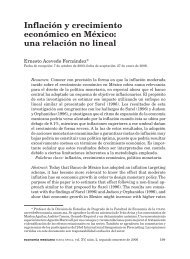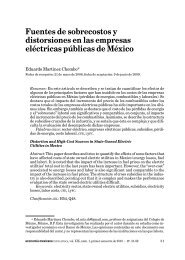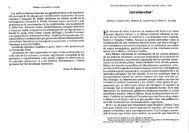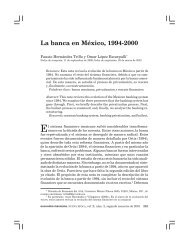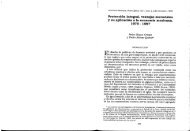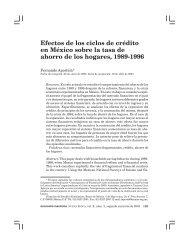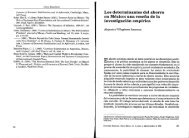Cadenas productivas, columna vertebral de los clusters industriales ...
Cadenas productivas, columna vertebral de los clusters industriales ...
Cadenas productivas, columna vertebral de los clusters industriales ...
Create successful ePaper yourself
Turn your PDF publications into a flip-book with our unique Google optimized e-Paper software.
128 Christian Enmanuel Laguna Reyes: <strong>Ca<strong>de</strong>nas</strong> <strong>productivas</strong>, <strong>columna</strong> <strong>vertebral</strong> <strong>de</strong> <strong>los</strong> <strong>clusters</strong>...<br />
base <strong>de</strong> un cluster, y la asignación <strong>de</strong> industrias individuales se lleva a<br />
cabo <strong>de</strong> acuerdo con una regla <strong>de</strong> <strong>de</strong>cisión. Esta técnica tiene la ventaja <strong>de</strong><br />
permitir observar relaciones difíciles <strong>de</strong> distinguir a simple vista en el<br />
cuadro <strong>de</strong> insumo-producto (Rey y Mattheis, 2000).<br />
La aplicación <strong>de</strong>l enfoque a <strong>los</strong> datos obtenidos implica la manipulación<br />
<strong>de</strong> la matriz <strong>de</strong> transacciones intermedias, Z, antes <strong>de</strong> implementar la<br />
técnica <strong>de</strong> componentes principales. El primer paso consiste en la estandarización<br />
<strong>de</strong> la matriz Z para corregir <strong>los</strong> efectos <strong>de</strong> las diferencias en <strong>los</strong><br />
tamaños <strong>de</strong> las industrias. Dos <strong>de</strong> las estandarizaciones más comunes<br />
consisten en convertir <strong>los</strong> flujos <strong>de</strong> transacciones z i, j en coeficientes <strong>de</strong><br />
compra, a ij , o en coeficientes <strong>de</strong> venta, b ij :<br />
a ij z ij<br />
X j<br />
b ij z ij<br />
X i<br />
Un proceso alternativo emplea el total <strong>de</strong> ventas o compras inter<strong>industriales</strong><br />
en lugar <strong>de</strong> las compras o ventas totales:<br />
z * ij<br />
aij <br />
zij <br />
j 1<br />
z * ij<br />
bij <br />
zij <br />
i 1<br />
Una vez que se ha elegido la forma <strong>de</strong> estandarización <strong>de</strong> la matriz Z, el<br />
siguiente paso es la creación <strong>de</strong> la matriz <strong>de</strong> entrada que alimentará el<br />
proceso estadístico (Rey y Mattheis, 2000). Cada elemento c ij <strong>de</strong> esta matriz<br />
<strong>de</strong> dimensión n x n representa la fuerza <strong>de</strong> <strong>los</strong> víncu<strong>los</strong> entre las industrias<br />
i y j. Con este fin se crea una matriz <strong>de</strong> correlaciones. 9 Czamanski<br />
(1979), y Feser y Bergman (2000) construyen esta matriz como:<br />
9 En el caso <strong>de</strong> la matriz <strong>de</strong> correlaciones, se <strong>de</strong>fine la matriz <strong>de</strong> ventas como la transpuesta<br />
<strong>de</strong> la <strong>de</strong> compras (Z T ).<br />
(1)<br />
(2)<br />
(3)<br />
(4)



